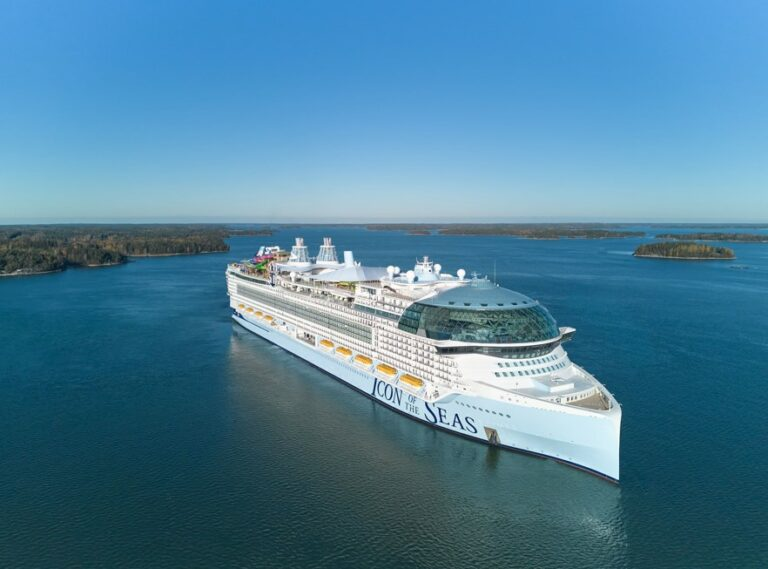Finnish shipbuilder Meyer Turku has delivered Icon of the Seas, believed to be the world’s largest and most advanced cruise ship to date, to the US-based cruise company Royal Caribbean International.

As informed, the LNG-powered newbuilding will leave the Meyer Turku shipyard this week and is expected to start its first voyage from Miami in January 2024.
The 365-meter-long Icon of the Seas has a gross tonnage of 248,655 tones. It can accommodate up to 7,600 passengers and 2,350 crew members. With a special focus on environmental technologies, it is equipped with fuel cell technology, shore power connections, and waste heat recovery systems to turn waste heat into up to 3MW extra energy. In addition, the vessel has air lubrication of the underwater hull, sending millions of microscopic bubbles along the hull of the ship to reduce friction.
The cruise ship recently finished its final sea trials, acing every test.
“Icon of the Seas is the world’s largest, but above all, the world’s most advanced cruise ship. Together with Royal Caribbean, we set the bar exceptionally high in terms of design, technology, safety and reducing energy consumption. Icon of the Seas is a revolutionary ship and at the same time a significant step towards the green transition, which is the shipyard’s most important competitive advantage. Such a demanding project has only been possible because we cooperate closely within the maritime cluster,” Tim Meyer, CEO of Meyer Turku, commented.
In what has been estimated to be the most complex project in the industrial history of Finland, several smaller, yet huge sub-projects fit inside. They are good examples of the strength of cooperation between Meyer Turku and partner companies.
Almost two months ago, the cruise ship also completed its first bunkering of LNG, received by Gasum.
Icon of the Seas will depart for its first customer cruise from its home port of Miami at the end of January. It will regularly cruise in the Caribbean.
The hull assembly of the second ship in the series, Star of the Seas, is scheduled to begin at the Meyer Turku shipyard in December.


